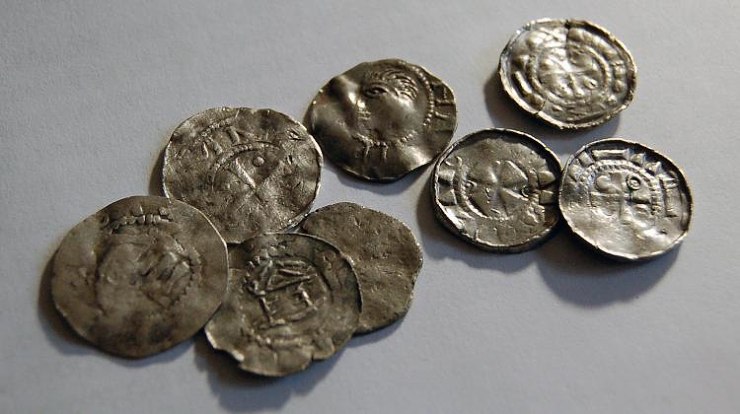Pěkná mince 👍 za by se mi hodila 🤗☘️
Success of the Polish Detectorist Association: the medieval treasure of the Crusader denarii
Categories: Minting - Numismatics , Treasures , Nálezy nejenom s detektorem kovů ve východní Evropě

A small but historically significant hoard of medieval coins was discovered just 15 cm deep in the forest on a hillside outside the town of Iława in northern Poland. The discovery was made by the town's detector club when its members, during a joint club thirteen complete silver coins and their fragments, mostly cross denarii.
Cross denarii were used in the territory of today's Poland, especially in the second half of the 11th century. They are a unique testimony to the trade relations of that time. They were minted in Saxony specifically for trade with the Western Slavs. One of the most interesting pieces is a deliberately broken 13th-century bractate minted by Sambor II, Duke of Pomerania.
A characteristic feature of these coins is the cross on the reverse of the denarii and the unusually high margins on both sides. Both the obverse and reverse are decorated with imitation inscriptions, pseudo-lettering that borders the images and symbols in the centre. Without actual inscriptions, the coins are difficult to date, but their production is limited to the period between 965 AD and the early 12th century.
According to Łukasz Szczepański of the Ostróda Museum, the location of this treasure provides valuable information about the settlement structure of the southern Jeziorak micro-region: 'In this area there is a Prussian fortress from the 11th century. - In this area, there is a fortress dating back to the 12th century, a network of open settlements and various types of earthworks attributed to Prussia. This treasure thus adds to our knowledge of settlements and activities in this zone," the archaeologist said.
In accordance with Polish law, the detectorists from the Iława Detector Society had permission to search from the landowner and the monuments' institute. The group hopes that this find, as well as their other discoveries, can be exhibited in a planned museum in Iława in the future. Until then, the treasure will serve as a valuable contribution to the collections of the Ostróda Museum.
Several similar sets of cross denarii have been discovered in Poland, the largest was found in 1935 in Słuszków in central Poland and contained more than 12,500 coins.
Roman Nemec
Sources: archeologia.com.pl, thehistoryblog.com, poszukiwania.pl



The article is included in categories:



